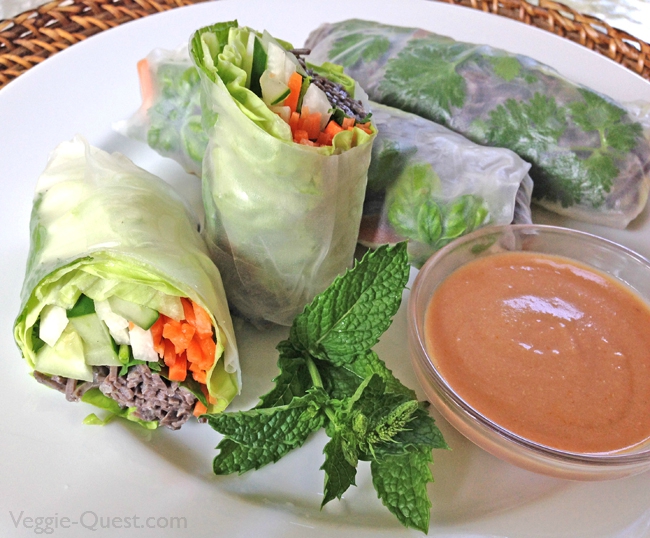
Whether you’re new to plant-based eating or you’re vegan but want to spruce up your health, change can seem intimidating. But given that plant-based diets slash disease risk and contain plenty of plant-powered protein, there’s every reason to lean in. Luckily shifting to whole plant foods can be fun—and delicious!
Here are 7 simple steps to help you get started, based on my family’s experience and resources I’ve found along the way.
1. Ease in
“Progress, not perfection” has always been my motto. I first transitioned from the Standard American Diet (SAD) to being vegetarian over the course of a year or so. Then I started shifting towards a plant-based diet, although there was some backsliding along the way. (Unfortunately, the whole backsliding thing didn’t go well, as you can read in my story here.)
In fact, my first foray into being plant-based was doing the occasional Meatless Monday, which can be a fun way to dip your toe into plant-based eating. Remember, every little bit helps! Even semi-vegetarians cut their risk when it comes to diabetes.
Of course, once they learn the science behind a plant-based diet, some people are eager to dive right in. If that’s you, go for it! Just remember to tell your healthcare provider about diet changes if you have a health condition. For example, eating plant-based can decrease the need for some medications, and other medications can interact with specific foods.
2. Pick 2-3 favorite meals you can easily make plant-based (or that already are)
I got this tip from the Physicians Committee. Spaghetti, chili, salads, and stir-fries are easy to make plant-based. They’re also minimally processed and loaded with phytonutrients and flavor.
Once you’ve picked some favorite meals, brainstorm how you’ll make them plant-based. Simple swaps include:
- Lentils or black beans instead of meat
- Chickpeas instead of chicken
- Plant-based milk instead of moo juice
- Whole grains or whole-grain spaghetti instead of processed pasta
Conveniently, many breakfasts are practically plant-based anyway. Just switch to whole-grain cereals (hot or cold) and plant-based milk, and you’re done.
Also, be sure to include lots of colorful fruits and vegetables at every meal. They can fill you up, keep you hydrated, and may even help you stay slim.1
3. Try one new recipe a week
Part of the fun of switching to a new way of eating is trying new recipes! As a general rule, I keep it to 1-2 new recipes per week to prevent overload, but you could do 3 if you’re adventurous. (You thrill seeker, you!) 😉
From salad to dessert, you’ll find lots of easy plant-based & gluten free recipes on Veggie Quest. Get even more recipes from amazing plant-based bloggers on the Whole-Food Plant-Based Board on Pinterest. (You can even pin your favorites there as you find them. Email me, Lee @ Veggie-Quest dot com, to be added as a pinner.)
4. Make a list
Once you know what you’re making for the week, write up your grocery list and hit the store. I found it easier to stick to familiar ingredients like beans and grains at first, but if you’re dying to try jackfruit tacos, well, I won’t stop you. 🙂 (Just let me know how it goes if you find a great recipe for that one—I’ve yet to have them turn out!)
Of course, buying extra produce can cost a little more. But if you also dial back on (or nix) animal products, you may be pleasantly surprised by your grocery bill.
5. Test drive
Here’s where the fun begins! Experiment with trying new recipes and making old favorites plant based. Write down your swaps, mark up your cookbooks with tips and flavor combos that you love—whatever it takes so you don’t forget the awesome things you discover along the way.
Also, be sure to give yourself time to adjust. If you’re used to fast food, rich restaurant meals, or putting cheese (or sugar) on everything (I hear you!), your taste buds and insides may take a little time to get used to your new food. In no time you’ll be loving it and wondering how you ever survived on the empty, junky stuff!
As for eating out, that’s no problem on a plant-based diet. (Although it can be a little trickier if you’re sensitive to gluten.) I’ll be writing more about this soon, but in the meantime, your best bets for plant-based fare are Asian and Mexican restaurants. Many dishes in these cuisines are already plant based.
6. Wash, rinse, repeat
Keep swapping in healthy plant-based fare over the next few weeks. Before you know it, you’ll be eating plant based most or all of the time.
As you cut animal products and refined foods like oil, white flour, and sugar, you may also find yourself losing weight despite feeling full. (Thank you, plant-powered food!) In fact, I’m down about 10 pounds from my SAD diet days, without specifically “trying” to lose that weight. And if you think that’s something, well, keep on reading—you’re going to want to hear about next week’s guest post.
7. Eat a variety of foods—and take vitamin B12
Eating an assortment of different foods is important on any diet, as it helps you get a variety of nutrients. However, people eating plant-based must take vitamin B12. The recommended intake for adults is 2.4 micrograms per day, although to actually absorb this much from a single daily supplement, you need to take more. To be on the safe side, I generally recommend 100 mcg daily or 1,000 mcg three times a week, or more if needed to keep your levels in the normal range. Please don’t risk it—vitamin B12 deficiency can cause serious problems. If eating mostly or entirely plant-based, it’s also a good idea to check your B12 levels at your annual physical.
If you don’t get unprotected sun exposure (most of us during the winter) and/or have darker skin (pigment in skin can block vitamin-D producing rays), you may need extra vitamin D. The RDA is 600 IU/day if you’re under 70, or 800 IU/day if you’re older. That said, many doctors think this level is too low and recommend more. A supplement is an easy way to make sure you get what you need.
Finally, make sure you have a reliable source of iodine in your diet. This could be taking a multivitamin, consuming sea vegetables like nori or dulse, using iodized salt when cooking, or a combination thereof. If you have a thyroid condition, please check with your doctor before changing your iodine intake.
Of course, if you have a health condition or you’re pregnant/breastfeeding, be sure to tell your doctor or dietitian when changing your diet—your nutrition needs may vary.
Side effects
So there you have it: seven steps that can have you eating plant-based in no time! However, be warned, side effects may include:
- Weight loss
- More energy
- Getting–and staying–“regular”
- Clearer skin
So much better than the fast-talking at the end of a drug commercial, no?
Just look what can happen when you go plant based…
As you can see, switching to a plant-based diet can seriously upgrade your health. In fact, next week, I’m excited to feature a plant-based success story from a very special guest blogger: Mama Veggie Quest! That’s right, my mom has lost—wait for it—85 pounds on a plant-based diet.
In her 60s.
Next week she’ll be sharing her journey, along with what helps her stay the course.
I hope you found these steps helpful and that you’re excited for your plant-based journey! If you want to learn even more about going plant-based, I recommend downloading the Physicians Committee’s free Vegetarian Starter Kit. This 16-page guide is packed with information, tips, and recipes, as well as information for pregnant and breastfeeding women, kids, and teens. (Indeed, I used it as a reference when writing this post.)
Click here for additional references- Bertoia ML, Rimm EB, Mukamal KJ, Hu FB, Willett WC, Cassidy A, et al. Dietary flavonoid intake and weight maintenance: three prospective cohorts of 124 086 US men and women followed for up to 24 years BMJ 2016; 352 :i17. http://www.bmj.com/content/352/bmj.i17
- Huang RY, Huang CC, Hu FB, Chavarro JE. Vegetarian Diets and Weight Reduction: a Meta-Analysis of Randomized Controlled Trials. J Gen Intern Med. 2015 Jul 3. [Epub ahead of print] http://link.springer.com/article/10.1007%2Fs11606-015-3390-7
- Sanjoaquin MA, Appleby PN, Spencer EA, Key TJ. Nutrition and lifestyle in relation to bowel movement frequency: a cross-sectional study of 20630 men and women in EPIC-Oxford. [Abstract] Public Health Nutr. 2004 Feb;7(1):77-83. http://www.ncbi.nlm.nih.gov/pubmed/14972075
- Veith WB, Silverberg NB. The association of acne vulgaris with diet. [Abstract] Cutis. 2011 Aug;88(2):84-91. http://www.ncbi.nlm.nih.gov/pubmed/2191627




 I'm Lee, an RD thriving on a healthy plant based diet.
I'm Lee, an RD thriving on a healthy plant based diet.
Great tips, Lee!!!
#3 is my favourite. Sometimes I get into a routine of making my favourite recipes each week, but that prevents me from finding new, favourite recipes ;p
Thanks Kimmy, I totally wrestle with falling into food ruts, too. (Ironic, since we’re both food bloggers, right?) 😉